What to Know
How to Calm Dog for Grooming
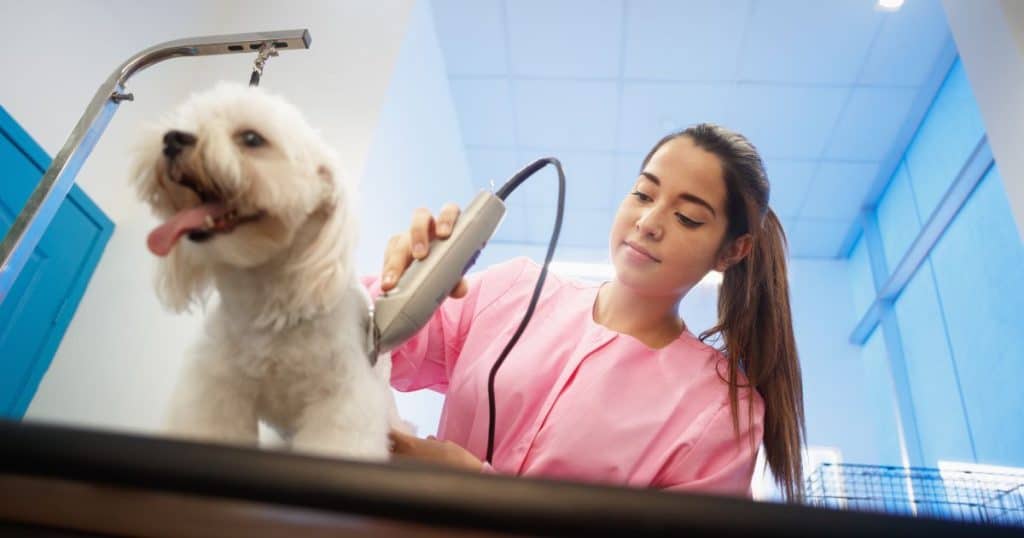
Grooming your dog is an essential part of their overall health and well-being. However, many dogs become anxious and stressed during the grooming process, which can make it difficult for both you and your furry friend. Fortunately, there are many techniques and strategies you can use to help calm your dog and make grooming a more positive experience.
Understanding Dog Anxiety
Before you can effectively calm your dog during grooming, it’s important to understand the root of their anxiety. Some dogs may have had negative experiences with grooming in the past, while others may simply be nervous or fearful of new experiences. By identifying the source of your dog’s anxiety, you can better tailor your approach to help them feel more comfortable and relaxed.
Preparation for Grooming
Preparing your dog for grooming is an important step in helping them stay calm and relaxed. This can include scheduling grooming appointments at a time when your dog is typically calm and well-rested, as well as providing positive reinforcement such as treats or praise during the grooming process. It’s also important to make sure your dog is comfortable with the grooming tools and environment and to gradually introduce them to new experiences over time.
Key Takeaways
- Understanding the root of your dog’s anxiety is key to calming them during grooming.
- Preparing your dog for grooming and providing positive reinforcement can help them feel more comfortable.
- Techniques such as desensitization and professional assistance can also be effective in calming your dog during grooming.
Understanding Dog Anxiety
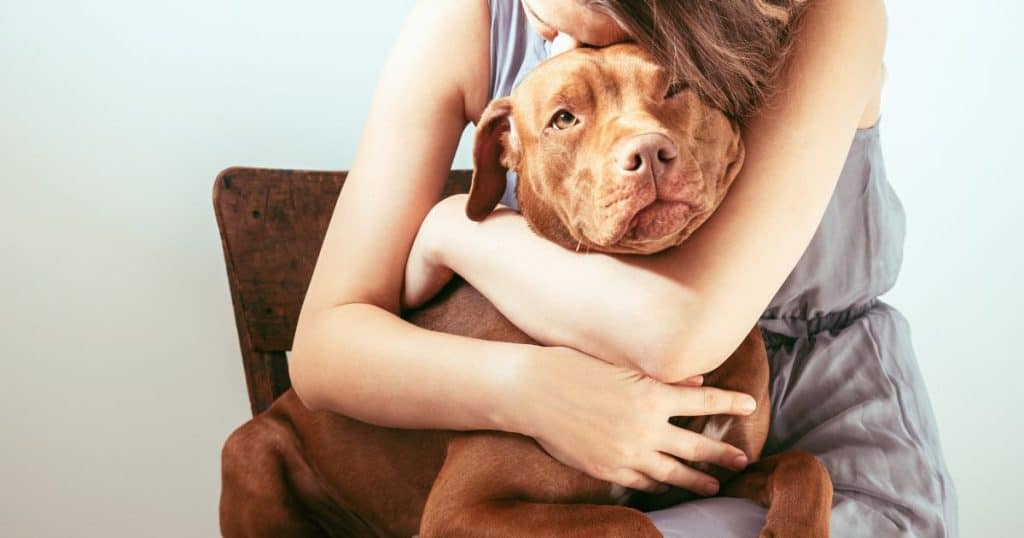
If you’re a dog owner, you know that grooming is an essential part of keeping your furry friend healthy and happy. However, not all dogs enjoy the grooming process, and some may even experience anxiety. Understanding dog anxiety is crucial to help your dog feel calm and comfortable during grooming sessions.
Recognizing Signs of Stress
Dogs can’t communicate their emotions verbally, so it’s essential to recognize the signs of stress. Some common signs of anxiety in dogs include panting, drooling, shaking, whining, and pacing. Other signs may include hiding, avoiding eye contact, and becoming agitated or aggressive.
Common Triggers
There are several common triggers that can cause anxiety in dogs during grooming sessions. Some dogs may be afraid of the grooming tools, such as clippers, scissors, or brushes. Other dogs may be anxious about being restrained or confined during grooming. Additionally, some dogs may have had a negative experience during grooming in the past, leading to fear or anxiety.
By understanding the signs of stress and common triggers, you can help your dog feel more comfortable during grooming sessions. In the next section, we’ll explore some strategies to help calm your dog during grooming.
Preparation for Grooming
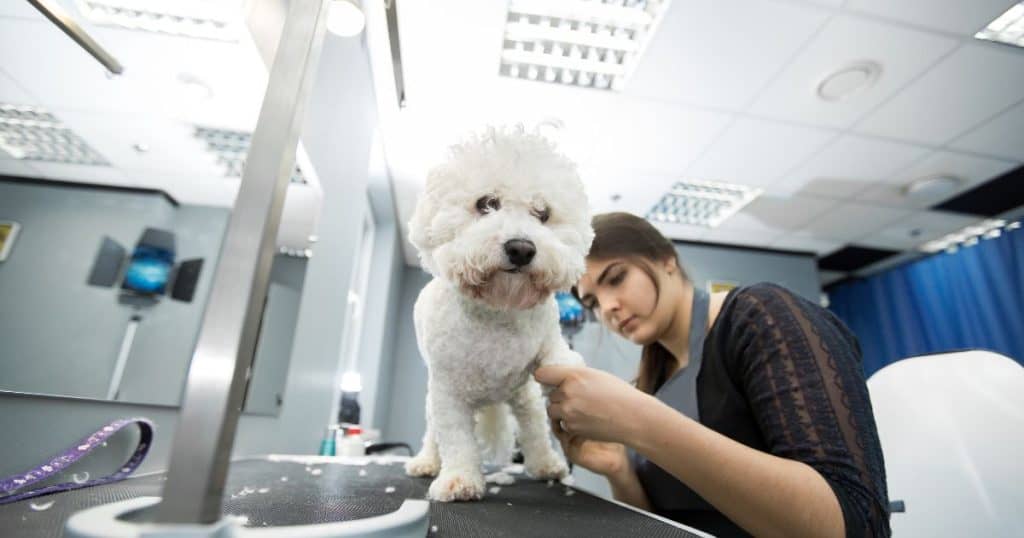
Before grooming your dog, it’s important to create a calm environment to help your furry friend feel relaxed and comfortable. Additionally, acclimatizing your dog to grooming tools beforehand can help reduce any anxiety they may feel during the grooming process.
Creating a Calm Environment
The environment in which you groom your dog can have a significant impact on their behavior. Here are a few tips to help create a calm environment:
- Choose a quiet location: Avoid grooming your dog in a busy area of your home. Instead, choose a quiet room where your dog can feel relaxed and comfortable.
- Minimize distractions: Turn off the TV and any other noisy appliances. This will help your dog stay focused and calm.
- Use calming scents: Consider using a calming scent like lavender or chamomile. These scents can help relax your dog and make them feel more comfortable.
Acclimatizing the Dog to Grooming Tools
Introducing your dog to grooming tools before the grooming session can help reduce any anxiety they may feel. Here are a few tips to help acclimatize your dog to grooming tools:
- Start slowly: Introduce the grooming tools slowly and gradually. Begin by letting your dog sniff the tools and become familiar with them.
- Use treats: Reward your dog with treats when they show interest in the grooming tools. This will help create a positive association with the tools.
- Practice handling: Practice handling your dog’s paws, ears, and other sensitive areas. This will help your dog become more comfortable with being touched and handled during the grooming process.
By creating a calm environment and acclimatizing your dog to grooming tools beforehand, you can help reduce any anxiety or stress they may feel during the grooming process.
Techniques to Calm Your Dog
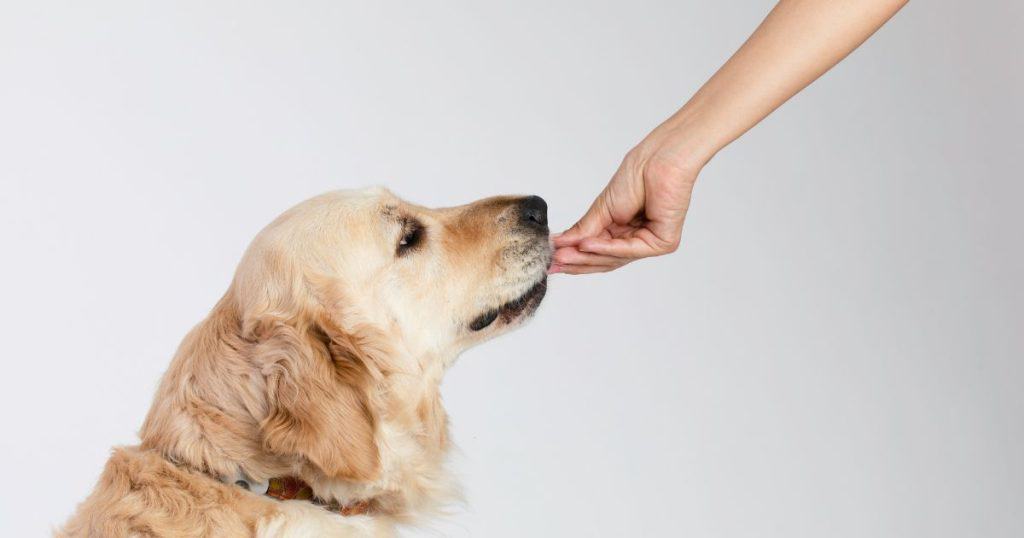
Grooming your dog can be a stressful experience for both you and your furry friend. However, with the right techniques, you can help your dog remain calm and relaxed during the grooming process. In this section, we will discuss two effective techniques to calm your dog: positive reinforcement and distraction.
Use of Positive Reinforcement
Positive reinforcement is a powerful tool that can help your dog associate grooming with positive experiences. This technique involves rewarding your dog with treats, praise, or toys for exhibiting calm behavior during grooming.
To use positive reinforcement, start by introducing your dog to grooming tools, such as brushes, clippers, and scissors, in a non-threatening way. Allow your dog to sniff and explore the tools while providing treats and praise for positive behavior. Gradually increase the amount of time your dog spends around the tools until they are comfortable being around them.
During grooming, reward your dog with treats and praise for calm behavior. Start with short grooming sessions and gradually increase the time as your dog becomes more comfortable. Remember to keep the grooming experience positive by providing treats and praise throughout the process.
Distraction Techniques
Distraction techniques involve diverting your dog’s attention away from the grooming process to help them remain calm. These techniques can be particularly useful for dogs that are anxious or nervous during grooming.
One effective distraction technique is to provide your dog with a puzzle toy or chew toy during grooming. This will keep your dog’s mind occupied and help them relax during the grooming process. Another technique is to play calming music or white noise to help drown out the sound of grooming tools.
It’s also important to remain calm and patient during grooming. Dogs can sense your emotions, so staying calm and relaxed can help your dog remain calm as well.
In summary, positive reinforcement and distraction techniques are effective ways to help your dog remain calm during grooming. By using these techniques, you can help your dog associate grooming with positive experiences and make the process less stressful for both you and your furry friend.
Professional Assistance
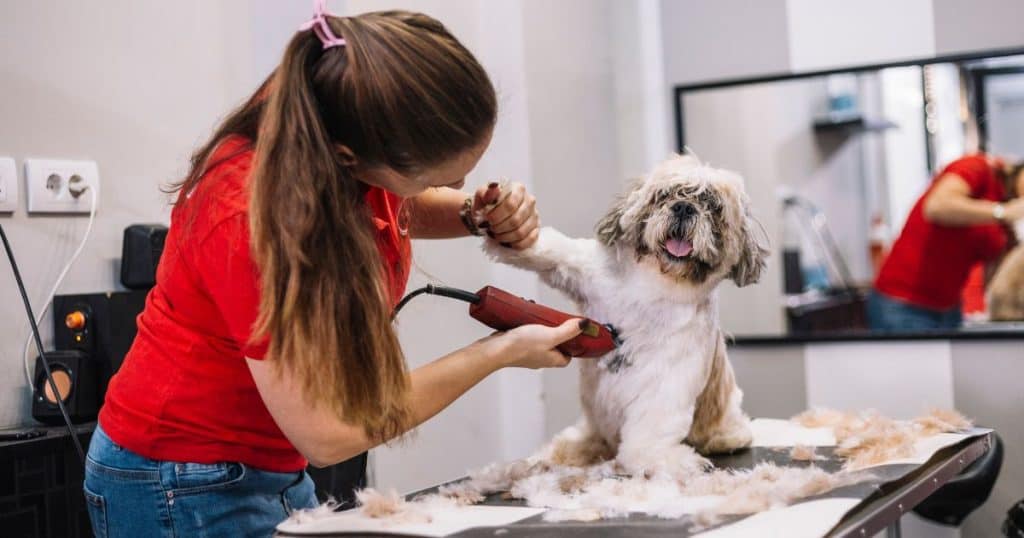
If you have tried various methods to calm your dog for grooming and they still exhibit signs of anxiety, it may be time to seek professional assistance. In this section, we will discuss when to seek professional help and how to choose a dog groomer.
When to Seek a Professional
If your dog has a severe case of grooming anxiety, it may be time to seek the help of a professional dog groomer. Professional dog groomers have experience handling dogs with anxiety and can provide a safe and comfortable environment for your furry friend. They may also have access to specialized equipment, such as grooming tables with restraints, that can help keep your dog calm and still during the grooming process.
Additionally, if your dog’s anxiety is causing them to become aggressive or lash out, it is important to seek professional help immediately. A professional dog groomer can help determine the root cause of your dog’s anxiety and provide solutions to help them feel more comfortable during grooming.
Choosing a Dog Groomer
When choosing a dog groomer, it is important to do your research to find a reputable and experienced professional. Look for groomers who have experience working with dogs with anxiety and who use positive reinforcement techniques to help keep dogs calm during grooming.
Ask for recommendations from friends and family members who have dogs, and read online reviews to get a sense of the groomer’s reputation. You may also want to visit the grooming facility in person to get a sense of the environment and to meet the groomer before booking an appointment.
When you find a groomer you like, be sure to communicate your dog’s anxiety issues and any other special needs they may have. A good groomer will work with you to create a grooming plan that is tailored to your dog’s individual needs and will take steps to help keep your dog calm and comfortable throughout the grooming process.
In summary, seeking professional assistance can be a great option for dogs with severe grooming anxiety. When choosing a dog groomer, be sure to do your research and find a reputable and experienced professional who can provide a safe and comfortable environment for your furry friend.
Post-Grooming Care
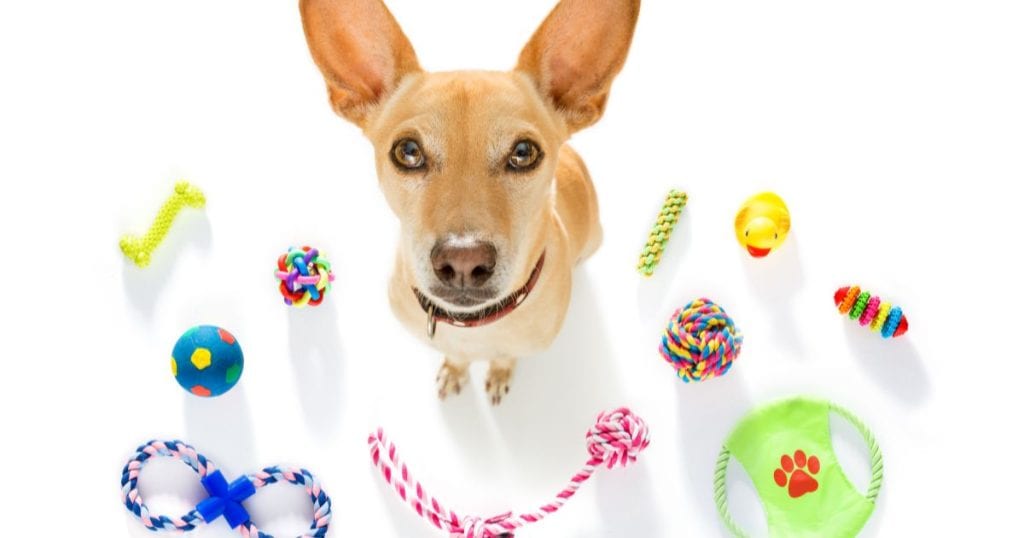
After a grooming session, your pup may need some extra care and attention. Here are some tips on how to care for your dog after grooming.
Rewarding Good Behavior
If your dog was well-behaved during the grooming session, reward them with a treat or a toy. Positive reinforcement can help your dog associate grooming with a positive experience, making future grooming sessions easier.
Observing Post-Grooming Behavior
After grooming, observe your dog’s behavior for any signs of discomfort or irritation. Check for any redness, swelling, or cuts on their skin. If you notice any issues, contact your veterinarian for advice.
Additionally, make sure your dog is comfortable and dry after the grooming session. If your dog is still damp, use a towel to dry them off. You may also want to provide them with a cozy blanket or bed to relax in.
Remember, grooming is an important part of your dog’s overall health and well-being. By taking care of your dog after grooming, you can help them feel comfortable and happy.
FAQs
What are some natural ways to calm a dog for grooming?
There are several natural ways to calm your dog for grooming. One way is to give your dog a massage before grooming. This can help to relax your dog and make them more comfortable during the grooming process. Another way is to use aromatherapy. Lavender and chamomile are both known for their calming properties and can help to soothe your dog’s nerves. You can also try playing soft music or using a calming pheromone spray.
How can I keep my dog still during grooming at home?
Keeping your dog still during grooming can be a challenge, but there are a few things you can do to help. One way is to use a grooming table or a non-slip mat to keep your dog in place. You can also use a grooming arm to keep your dog’s head and body still. Another way is to use treats or toys to distract your dog and keep them occupied while you groom them.
What are some effective over-the-counter sedatives for dogs?
There are several over-the-counter sedatives that can be effective for calming your dog during grooming. Melatonin is a popular choice and is known for its calming properties. Another option is chamomile, which can help to soothe your dog’s nerves. You can also try using a calming supplement like Zylkene or Composure.
What should I do if my dog hates being groomed?
If your dog hates being groomed, there are a few things you can do to make the experience more pleasant for them. One way is to start with short grooming sessions and gradually increase the length of time as your dog becomes more comfortable. You can also try using positive reinforcement, such as treats or praise, to reward your dog for good behavior. If your dog is still struggling, you may want to consider working with a professional groomer or a dog behaviorist.
How do professional groomers deal with difficult or aggressive dogs?
Professional groomers are trained to handle difficult or aggressive dogs. They may use a variety of techniques, such as distraction, positive reinforcement, and desensitization, to help calm your dog during grooming. In some cases, they may also recommend sedation or working with a dog behaviorist to address underlying behavioral issues.
Are there any groomers near me that specialize in anxious dogs?
There may be groomers in your area that specialize in working with anxious dogs. It’s important to do your research and find a groomer who has experience working with dogs with similar issues to your own. You can ask for recommendations from your veterinarian or other dog owners, or search online for groomers in your area who specialize in working with anxious dogs.




Leave a Reply
You must be logged in to post a comment.